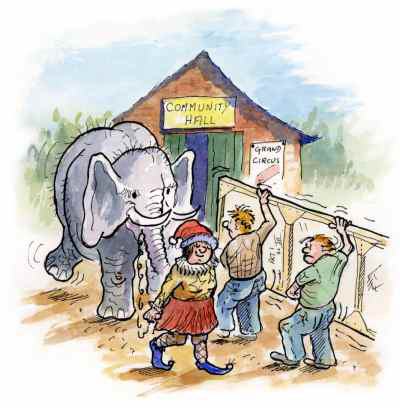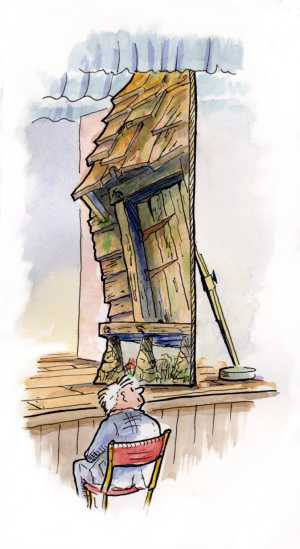Extracts from....."PAINTING SCENERY
FOR THE AMATEUR STAGE"
Amount of stage space each scene will take? i.e. are any of them front cloths when scene changes can take place behind?
Any permanent flats; wings; cloths? (I.e. not changed during the show)
Any permanent painted borders? (Lighting person will probably get grumpy about
these)
Any scenery to surround the orchestra? An orchestra "pit" often appears as a last minute extra once the scenery gets into the hall.
Costume colours? (In amateur productions probably not know until it's too late to effect your choice of colours)
Does the producer want a colour theme running through a particular scene? (or even the whole show)
List the elements in each scene which MUST be included.....Items referred to by the actors, or called for by the action, such as .... the picture on the wall; the bridge in the forest; a sign above the bar; etc.
And confirm where these items have to be placed.
Date of technical rehearsal
Date of dress rehearsal
Date show starts
Who used the hall/theatre before us. Are we going to be struggling to get in whilst they are struggling to get out?

Are we going to be struggling to get in whilst they are struggling to get out?
This may seem a bit early to be asking that, but being forewarned helps you decide what you can leave to be pulled together when the set has been erected on the stage.
If you are also the designer than a visit to the theatre/hall came well before any meetings, production or otherwise. But for this booklet I'm assuming all!! you have to do is paint the scenery.
This chapter continues in the book but I haven't time to transfer it all here.
Preliminary work varies from group to group. Sometimes I am presented with a complete scale model of all the sets required together with working drawings. At other times I do all the preparation work. Groups differ in who does what.
WHAT ELEMENTS ARE IN THE SCENE?
For me, the first stage in the drawing process is to write down on a large sheet of paper all the possible elements that could go into a scene.....Let's take the Panto "Village Green". I will write down things such as ....... thatch; dormer windows; diamond window panes; roses over the door; pond; stocks; pub sign; etc. (Not forgetting of course the items I know have to be put in as they are an integral part of the story.... "King John's Castle in the distance" type of thing.) From this list I then fiddle about for days trying out ideas- I don't put in every item from my list. However I eventually come up with a plan of sorts, including the wings as well of course.
